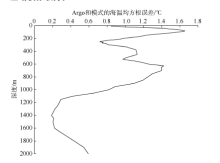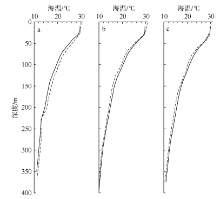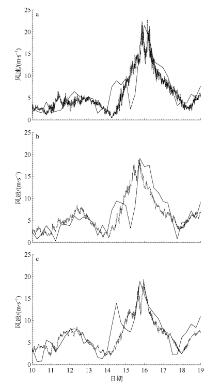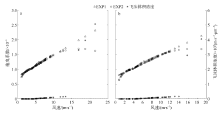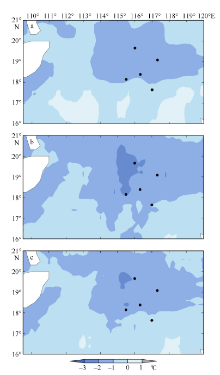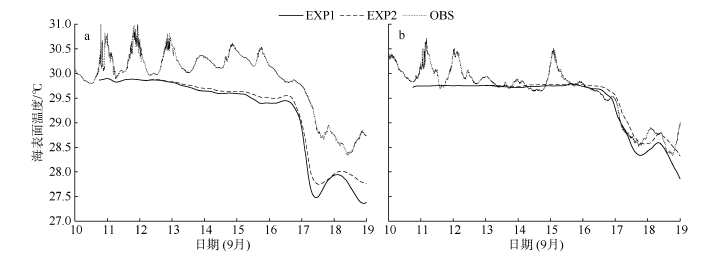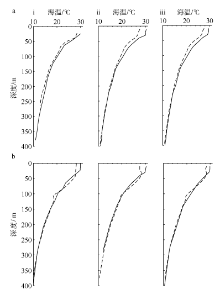| [1] |
陈大可, 雷小途, 王伟, 等, 2013. 上层海洋对台风的响应和调制机理[J]. 地球科学进展, 28(10): 1077-1086.
|
|
CHEN DAKE, LEI XIAOTU, WANG WEI, et al, 2013. Upper ocean response and feedback mechanisms to typhoon[J]. Advances in Earth Science, 28(10): 1077-1086 (in Chinese).
|
| [2] |
段自强, 李永平, 于润玲, 等, 2016. 海洋飞沫方案改进对台风“威马逊”强度预报的影响[J]. 海洋与湖沼, 47(6): 1075-1090.
|
|
DUAN ZIQIANG, LI YONGPING, YU RUNLING, et al, 2016. On tropical cyclone intensity forecast using improved sea spray scheme in regional atmosphere-wave coupled model[J]. Oceanologia et Limnologia Sinica, 47(6): 1075-1090 (in Chinese).
|
| [3] |
罗蒋梅, 潘静, 杨支中, 2011. 海面风应力拖曳系数参数化方案对风暴潮数值模拟的影响[J]. 海洋预报, 28(3): 15-19.
|
|
LUO JIANGMEI, PAN JING, YANG ZHIZHONG, 2011. Impact of the parameterization scheme about sea surface wind stress drag coefficients on numerical simulation of strom surge[J]. Marine Forecasts, 28(3): 15-19 (in Chinese).
|
| [4] |
王秀芹, 钱成春, 王伟, 2001. 风应力拖曳系数选取对风暴潮数值模拟的影响[J]. 青岛海洋大学学报, 31(5): 640-646.
|
|
WANG XIUQIN, QIAN CHENGCHUN, WANG WEI, 2001. Test of influence of wind drag coefficient on typhoon storm surge simulations[J]. Journal of Ocean University of Qingdao, 31(5): 640-646 (in Chinese).
|
| [5] |
赵中阔, 梁建茵, 万齐林, 等, 2011. 强风天气条件下海气动量交换参数的观测分析[J]. 热带气象学报, 27(6): 899-904.
|
|
ZHAO ZHONGKUO, LIANG JIANYIN, WAN QILIN, et al, 2011. Observational analysis of air-sea momentum exchange in strong wind condition[J]. Journal of Tropical Meteorology, 27(6): 899-904 (in Chinese).
|
| [6] |
中国气象局, 2016. 热带气旋年鉴2014[M]. 北京: 气象出版社: 123-125.
|
| [7] |
周婕, 曾诚, 王玲玲, 2009. 风应力拖曳系数选取对风生流数值模拟的影响[J]. 水动力学研究与进展, 24(4): 440-447.
|
|
ZHOU JIE, ZENG CHENG, WANG LINGLING, 2009. Influence of wind drag coefficient on wind-drived flow simulation[J]. Chinese Journal of Hydrodynamics, 24(4): 440-447 (in Chinese).
|
| [8] |
ANDREAS E L, 2002. Parameterizing scalar transfer over snow and ice: A review[J]. Journal of Hydrometeorology, 2002, 3(4): 417-432.
|
| [9] |
ANDREAS E L, JORDAN R E, MAKSHTAS A P, 2004. Simulations of snow, ice, and near-surface atmospheric processes on ice station Weddell[J]. Journal of Hydrometeorology, 5(4): 611-624.
|
| [10] |
BAO J W, FAIRALL C W, MICHELSON S A, et al, 2011. Parameterizations of sea-spray impact on the air-sea momentum and heat fluxes[J]. Monthly Weather Review, 139(12): 3781-3797.
|
| [11] |
BLACK P G, D'ASARO E A, SANFORD T B, et al, 2007. Air-sea exchange in hurricanes: synthesis of observations from the coupled boundary layer air-sea transfer experiment[J]. Bulletin of the American Meteorological Society, 88(3): 357-374.
|
| [12] |
GARRATT J R, 1977. Review of drag coefficients over oceans and continents[J]. Monthly Weather Review, 105(7): 915-929.
|
| [13] |
GRYTHE H, STROM J, KREJCI R, et al, 2014. A review of sea-spray aerosol source functions using a large global set of sea salt aerosol concentration measurements[J]. Atmospheric Chemistry and Physics, 14(3): 1277-1297.
|
| [14] |
GRYTHE H,
|
| [15] |
LARGE W G, POND S, 1981. Open ocean momentum flux measurements in moderate to strong winds[J]. Journal of Physical Oceanography, 11(3): 324-336.
|
| [16] |
MAKIN V K, 2005. A note on the drag of the sea surface at hurricane winds[J]. Boundary-Layer Meteorology, 115(1): 169-176.
|
| [17] |
SMITH S D, 1980. Wind stress and heat flux over the ocean in gale force winds[J]. Journal of Physical Oceanography, 10(5): 709-726.
|
| [18] |
TROITSKAYA Y, SERGEEV D, ERMAKOVA O, et al, 2011. Statistical parameters of the air turbulent boundary layer over steep water waves measured by the PIV technique[J]. Journal of Physical Oceanography, 41(8): 1421-1454.
|
| [19] |
VICKERS D, MAHRT L, ANDREAS E L, 2013. Estimates of the 10-m neutral sea surface drag coefficient from aircraft eddy-covariance measurements[J]. Journal of Physical Oceanography, 43(2): 301-310.
|
| [20] |
XIE JIPING, ZHU JIANG, 2010. Ensemble optimal interpolation schemes for assimilating Argo profiles into a hybrid coordinate ocean model[J]. Ocean Modelling, 33(3-4): 283-298.
|
| [21] |
ZACHRY B C, SCHROEDER J L, KENNEDY A B, et al, 2013. A case study of nearshore drag coefficient behavior during hurricane Ike (2008)[J]. Journal of Applied Meteorology and Climatology, 52(9): 2139-2146.
|
 ), LI Yongping2, DUAN Ziqiang2
), LI Yongping2, DUAN Ziqiang2




